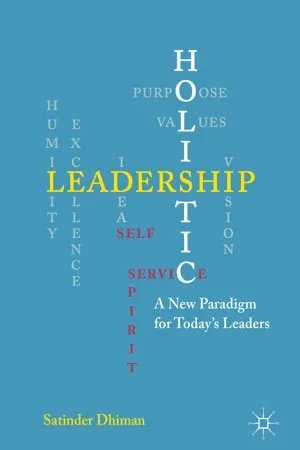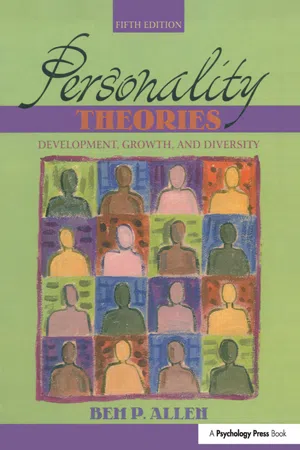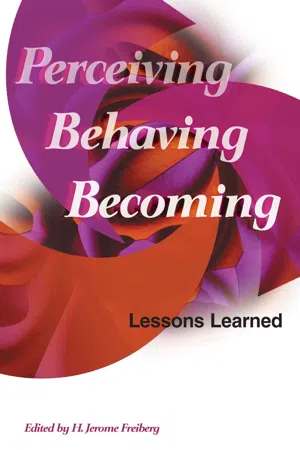Psychology
Abraham Maslow
Abraham Maslow was a prominent psychologist known for his theory of human motivation and the hierarchy of needs. He proposed that individuals are motivated to achieve certain needs, which form a hierarchy ranging from basic physiological requirements to self-actualization. Maslow's work has had a significant impact on the field of psychology, particularly in understanding human behavior and motivation.
Written by Perlego with AI-assistance
Related key terms
1 of 5
11 Key excerpts on "Abraham Maslow"
- eBook - ePub
Psychology for Actors
Theories and Practices for the Acting Process
- Kevin Page(Author)
- 2018(Publication Date)
- Routledge(Publisher)
CHAPTER 7 Abraham Maslow Motivation and Humanistic PsychologyAs discussed in the first chapter of this book, Abraham Maslow (1908–1970) was a seminal figure in twentieth-century psychology whose work marked the turning point from reductionistic and highly academic forms of psychology, primarily focused on pathology and mental disease, to a much broader view of the human experience and the more positive potentials of human development. Maslow began his career as a staunch behaviorist, studying dogs and later chimpanzees, before coming under the influence of both Freud and Adler. In developing his own theories, Maslow would synthesize the work of many of his intellectual antecedents, in addition to Freud and Adler, including Max Wertheimer and Kurt Koffka (Gestalt psychology); Kurt Goldstein (who first coined the term “self-actualization”); social anthropologists Margaret Mead, Ruth Benedict, and Ralph Linton; social psychologists and psychoanalysts Karen Horney and Erich Fromm; and others, many of whom he came to know personally in roiling intellectual circles of New York City in the late 1930s (Hoffman, 1988, pp. 87–110).Maslow came to believe in a radical type of holism, in direct contradiction to both behaviorism and psychoanalysis, that focused on the discrete elements of psychological functioning often to the exclusion of much human experience, where the person was looked at as a whole, integrated system—each part fully interrelated to and interdependent on the other parts of the whole. For Maslow, one could not separate out external behavior from internalized values and subjective experience; they were all simply different, and inseparable, dimensions of the same event in reality: the psychological life of a human being.Maslow’s primary concerns became understanding and conceptualizing a psychology that covered the full range of human experience, especially the most mature and healthy of the population. Instead of concentrating on the mentally ill, as most psychologists previous to him had done, Maslow became interested in studying the psychological traits of the most highly developed and mentally healthy people he could find. This led him to develop a theory of human motivation that extended from feelings of deprivation and struggle with basic needs, such as food and shelter, through the entire spectrum of human endeavor to include those rare individuals who might change whole societies by their actions, such as great historical leaders or sainted religious figures. Effectively, his theory of motivation integrated the findings of behaviorism and Freudian psychoanalysis (and its extensions), along with the holism of Gestalt psychology and the functionalism of William James and John Dewey, to create a model that Maslow considered both holistic and dynamic (Maslow & Frager, 1987, p. 15). - eBook - ePub
Employee Motivation in Saudi Arabia
An Investigation into the Higher Education Sector
- Rodwan Hashim Mohammed Fallatah, Jawad Syed(Authors)
- 2017(Publication Date)
- Palgrave Macmillan(Publisher)
quantitative findings.Maslow’s Hierarchy of Needs
Abraham Maslow (1908–1970) was an American psychologist who conducted extensive academic research on motivation , with several notable publications includingMotivationand Personality (1954 ) and Toward a Psychology of Being (1964) (Maslow 2011 ; Kermally 2005 ). In academic and practitioner circles, he is held in high regard particularly for his Hierarchy of Needs model (Valiunas 2011 ; Whitlock 2011 ), which has been hailed as a pioneering concept for exploring and understanding human motivational needs (Goud 2008 ; Kermally 2005 ). As such, and given its wide popularity, it was logical to choose Maslow’s theory for this research as the basis for a critical exploration of motivational needs in a Saudi context .Maslow adopted a theoretical approach dividing motivation into five needs and arranging these in a hierarchical order of importance to employees (Keleş 2012 ). These needs are as follows: physiological (survival needs such as food, water, and breathing), security (safety needs such as financial safety and safety against redundancy and harm), social (the need for love, friendship, acceptance, and belonging), esteem and autonomy (the need for respect, appreciation, empowerment, and being given a voice and rights) and self-actualisation (the highest needs which entail doing and achieving one’s best potential) (Adina and Medet 2012 ).Many disciplines today frequently use this theory to gain an understanding of and explanation for workplace motivation . Consequently, Maslow’s has become the most popular theory of motivation for its considered usefulness and effectiveness in conceptualising human needs (Jackson et al. 2004 ).Although a significant body of literature has the impression that Maslow’s theory is universally applicable (Ofori-Dankwa and Ricks 2000 ; Yang 2002 ), it is still criticised particularly because of its cross-cultural limitations (Viorel et al. 2009 ). It is a fact that Maslow’s theory was conceived within a specific context , i.e. the United States of America (USA ), and empirically applied on specific subjects, i.e. white, middle-aged Americans (Gambrel and Cianci 2003 ; Kulkarni 2011 ). It can be argued that the sole use of the USA as a research site in formulating the theory indicates its ethnocentric nature (Itai 2008 ; Jelavic and Ogilvie 2009 ). The theory has been alleged to have underestimated the effect of culture on perceptions of one’s need satisfaction at work (Krasulja and Radojevic 2011 ; Onedo 1991 ; Saleh 1984 ; Slocum 1971a , b ). It is the contextual and cultural aspect of motivation that this book seeks to explore and, in doing so, evaluates the universality or otherwise of Maslow’s - Elizabeth Kuhnke, Kate Burton, Brinley Platts, Brinley N. Platts(Authors)
- 2013(Publication Date)
- For Dummies(Publisher)
The more motivated you feel, the more inclined you are to push yourself through the things that are holding you back, (which is how we define confidence in Chapter 1). If you can increase your motivation, you automatically increase your confidence. In the next sections, we look at Abraham Maslow’s influential hierarchy of needs to help you gain insight into what motivates you and everyone you come into contact with.Rising through Maslow’s hierarchy of needsOne of the founders of the human potential movement, Abraham Maslow, is best known for his work on human motivation. He was fascinated by what makes some people able to face huge challenges in life, and especially what makes them refuse to give up despite incredible odds. He developed the model for which he is best known – his hierarchy of needs, shown in Figure 4-1 – to explain the forces that motivate people.Figure 4-1: Looking at Maslow’s hierarchy of needs.Maslow saw men and women being constantly drawn on through life by the irresistible pull of unsatisfied needs. He grouped human needs into a hierarchy, which everyone shares and needs to satisfy from the bottom up. This model is widely taught in management development courses, but his work goes far beyond the workplace to the very heart of our humanity.Maslow believed that you must first satisfy your basic physiological needs for air, water, food, sleep, and so on before any other desires will surface. As a member of modern society, these basic needs are largely taken care of for you, but if you’ve ever been short of breath under water you know and understand how this first-tier, physiological need dominates everything else until satisfied.But when your physiological needs are met, you automatically shift up to the next level in the hierarchy to your broader need for safety – and that now drives you. Again, modern society tends to provide safe environments, but whenever you do feel threatened, you experience an automatic anxiety response and cannot think of much else until the situation is resolved and you feel safe again.- eBook - PDF
Holistic Leadership
A New Paradigm for Today's Leaders
- Satinder Dhiman(Author)
- 2017(Publication Date)
- Palgrave Macmillan(Publisher)
3 Abraham H. Maslow, “A Theory of Human Motivation,” Psychological Review, Vol. 50 (4), 1943: 370–396. 4 Abraham H. Maslow, Motivation and Personality (New York, NY: Harper, 1954). 5 Ibid., 234. 18 S. DHIMAN Though many have suggested improvisations of his theory, it continues to be the benchmark standard because of its strong intuitive logic. In Maslow’s scheme, the needs are sequenced as follows, from the most urgent to the most advanced (Fig. 2.1): 1. Physiological Needs 2. Safety Needs 3. Belonging Needs 4. Self-esteem 5. Self-actualization Commenting on the hierarchical nature of needs, Maslow observes: It is quite true that man lives by bread alone—when there is no bread. But what happens to man’s desires when there is plenty of bread and when his belly is chronically filled? At once other (and “higher”) needs emerge and these, rather than physiological hungers, dominate the organism. And when these in turn are satisfied, again new (and still “higher”) needs emerge and so on. This is what we mean by saying that the basic human needs are organized into a hierarchy of relative prepotency. A peculiar characteristic of the human organism when it is dominated by a certain need is that the whole philosophy of the future tends also to change. For our chronically and extremely hungry man, … life itself tends to Fig. 2.1 Adapted from Abraham H. Maslow, “A Theory of Human Motivation,” Psychological Review, 1943, Vol. 50 (4) 370–396. SELF-MOTIVATION: MOTIVATING THE WHOLE PERSON 19 be defined in terms of eating. Anything else will be defined as unimportant. Freedom, love, community feeling, respect, philosophy, may all be waved aside as fripperies that are useless since they fail to fill the stomach. All that has been said of the physiological needs is equally true of the safety needs. 6 In the short space of two paragraphs, Maslow presents the essence of his understanding about the hierarchical nature of human needs. - eBook - ePub
Personality Theories
Development, Growth, and Diversity
- Bem P. Allen(Author)
- 2015(Publication Date)
- Psychology Press(Publisher)
10Becoming All That One Can Be: Abraham Maslow
• Can a psychologist who despised his mother turn out right?• Must we meet our basic physiological needs before we can address other kinds?• What is the highest level of personality development?Abraham Maslow www.ship.edu/~cgboeree/maslow.htmlT he two brightest stars in the humanistic firmament are certainly Carl Rogers and Abraham Maslow. Not surprisingly, they share much in common. Both are more concerned with the here and now rather than with the past. Both flirted with the ideas of Sigmund Freud briefly, and both were influenced by Alfred Adler. Both also emphasized the importance of self-actualization in personality functioning and development, but here the similarities fade. For Rogers, self-actualization was one of several central concepts. By contrast, Maslow emphasized it above all other concepts. According to Rogers, self-actualization was within the grasp of most people, but to Maslow it was reserved for a special few.As people they were quite different. Rogers came from a traditional family. Maslow considered himself an abused and neglected child and a victim of prejudice. Rogers was totally warm and accepting and assumed the basic goodness of humans. Maslow could show the same traits, but in his youth he seethed with suppressed anger and was more than willing to acknowledge the sinister side of human nature. Yet, in their own separate ways, both humanists sought to help people lay aside others’ expectations and become what they were destined to be.Maslow, the Person
When Samuel Maslow arrived in the United States from the Ukrainian city of Kiev, he brought little with him, except the ability to speak Russian and Yiddish, a language common among European Jews (Hoffman, 1988). Soon he moved in with relatives residing in New York City. There he met and married his first cousin Rose, a woman who would prove more devoted to religion than to her family. Abraham, the first of their seven children, was born April Fool’s Day 1908. Fate played a trick on him, giving him parents who were part of a master plan to ensure his eternal torment. - eBook - ePub
Tourist Experiences
Insights from Psychology
- Chris Ryan, Xiaoyu (Nancy) Zhang, Xiaoyu Zhang(Authors)
- 2024(Publication Date)
- Channel View Publications(Publisher)
Figure 5.1 .Figure 5.1 Maslow’s hierarchy of needsThe figure is usually drawn as a triangle for a number of reasons (as shown in Figure 5.1 ). First, it is often stated to be hierarchical with each stage being built upon the other, thereby representing a series of stages as one climbs towards the highest level of self-actualisation. Second, Maslow in his writings implies that not everyone is capable of the higher stages, a belief drawn from his own personal experience derived from his view of his own mother and being a victim of antisemitic gangs in his youth. Furthermore, he explicitly states in his own book, Motivation and Personality, that less than 5% of the American population display the characteristics of being ‘self-actualised’.That book is of interest for several reasons. First, in the initial pages he states that his own motivation for writing the book was a wish to correct what he thought was wrong with much of psychology up to the time of writing. He argued that psychology was directed at the problems of the mentally ill. It is relevant to note that his own life overlapped Sigmund Freud, for Freud did not die until September 1939 when Maslow was aged 31 and already teaching at Brooklyn College in New York. Maslow believed that it was not possible to ‘cure’ the mentally ill without a clear goal or conception of what it was to be mentally healthy. In Towards a Psychology of Being (Maslow, 1968) and Motivation and Personality - eBook - PDF
- Richard Ryckman(Author)
- 2020(Publication Date)
- Cengage Learning EMEA(Publisher)
His classic paper was published in Psychological Review in 1943, after he had left Columbia and begun teaching at Brooklyn College. During Maslow’s 14 years at Brooklyn College, he had an opportunity to meet and be exposed to the ideas of such prominent psychologists, psychoanalysts, and cultural anthropolo- gists as Max Wertheimer, Karen Horney, Alfred Adler, Erich Fromm, and Ruth Benedict. The exposure had a considerable influence on his thinking, and it was at this point that he rejected the oversimplified S-R view of human behavior and embraced instead a more holistic and dynamic view of personality functioning. In 1951, Maslow moved to Brandeis University, where he served as department chair for many years. While at Brandeis, he produced two of his most creative works, Motiva- tion and Personality (1954) and Toward a Psychology of Being (1962). In 1967, he was elected president of the American Psychological Association. That same year, he accepted a fellowship at the Laughlin Foundation in Menlo Park, California, to devote all his time to writing. Unfortunately, he died of a heart attack one year later, at the age of 62 (Wilson, 1972, pp. 129–202). Concepts and Principles Humanistic Biology and Self-Actualization Maslow laid the groundwork for his theory of self-actualization by making the assump- tion that each of us has an intrinsic nature that is good or, at the very least, neutral 300 Part 5: Humanistic/Existential Perspectives Copyright 2013 Cengage Learning. All Rights Reserved. May not be copied, scanned, or duplicated, in whole or in part. Due to electronic rights, some third party content may be suppressed from the eBook and/or eChapter(s). Editorial review has deemed that any suppressed content does not materially affect the overall learning experience. Cengage Learning reserves the right to remove additional content at any time if subsequent rights restrictions require it. - eBook - ePub
Personality Theories
Critical Perspectives
- Albert Ellis, Mike Abrams, Lidia Abrams(Authors)
- 2008(Publication Date)
- SAGE Publications, Inc(Publisher)
The Gestalt school posed a direct challenge to behaviorism’s molecular view of the human mind. The Gestalt psychologists’ challenge was predicated on the principle that the human brain is more than a switching circuit; instead, it interprets and transforms information. This principle was expanded on in the middle of the 20th century by an experimental psychologist named Abraham Maslow. While teaching at Brooklyn College of the City University of New York and later at Brandeis University, Maslow advanced the idea that psychology should consider the unique aspects of humankind. He was somewhat stifled by the predominance of behaviorism, even though he had completed a Ph.D. dissertation at the University of Wisconsin on the dominance characteristics of monkeys. He later said that a happy marriage and the birth of his first daughter convinced him that behaviorism is inadequate to explain the richness of human experience.Frustrated by his difficulty in publishing articles in psychology journals with behaviorist reviewers, he began to contact like-minded psychologists. His networking ultimately led to the formation of the Association of Humanistic Psychology (AHP) and the Journal of Humanistic Psychology and to the beginning of what Maslow called thefourth forcein psychology. The first three forces were (1) psychoanalysis, (2) behaviorism, and (3) humanistic psychology. The fourth force ortranspersonal psychologyadded a spiritual element to humanism. Maslow’s novel approach to psychology was first seen in his 1943 article titled “A Theory of Human Motivation.” In it he proposed that people seek to fulfill a range of motivational needs and outlined 13 principles of motivation:- The integrated wholeness of the organism must be one of the foundation stones of motivation theory.
- The hunger drive (or any other physiological drive) was rejected as a centering point or model for a definitive theory of motivation. Any drive that is somatically based and localizable was shown to be atypical rather than typical in human motivation.
- H. Jerome Freiberg(Author)
- 1999(Publication Date)
- ASCD(Publisher)
We might take issue with any number of his ideas while still finding his conception of human potential a basis for lively discussion and a source of energy and inspiration. References Aron, A. (1977/1986). Maslow’s other child. Reprinted in Politics and innocence: A hu-manistic debate (pp. 98–111). Dallas: Saybrook. (Originally published 1977) Buss, A. (1979/1986). Humanistic psychology as liberal ideology: The socio-historical roots of Maslow’s theory of self-actualization. Reprinted in Politics and innocence: A humanistic debate (pp. 136–148). Dallas: Saybrook. (Originally published 1979) Geertz, C. (1983). From the native’s point of view. In Local knowledge . New York: Basic Books. Geller, L. (1982). The failure of self-actualization theory: A critique of Carl Rogers and Abraham Maslow. Journal of Humanistic Psychology, 22 (2), 56–73. Gruenberg, B. (1980). The happy worker: An analysis of educational and occupational differences in determinants of job satisfaction. American Journal of Sociology, 86 , 247–271. Hall, D. T., & Nougaim, K. E. (1968). An examination of Maslow’s need hierarchy in an organizational setting. Organizational Behavior and Human Performance, 3 , 12–35. Harlow, H. F., Harlow, M. K., & Meyer, D. R. (1950). Learning motivated by a manipu-lation drive. Journal of Experimental Psychology, 40 , 228–234. A L OOK AT M ASLOW’S “B ASIC P ROPOSITIONS ” 103 3 “Of course, with the traditional model of 35 children in one classroom and a curriculum of sub-ject matter to be gotten through in a given period of time, the teacher is forced to pay more attention to orderliness and lack of noise than [to] making learning a joyful experience” (Maslow, 1976, p. 181). Hoffman, E. (1988). The right to be human: A biography of Abraham Maslow . Los Angeles: Jeremy P. Tarcher. Kohlberg, L. (1971). From is to ought: How to commit the naturalistic fallacy and get away with it in the study of moral development.- eBook - ePub
- Frederick Walborn(Author)
- 2013(Publication Date)
- Academic Press(Publisher)
Chapter 12Abraham Maslow
Abstract
The Humanistic psychologist Abraham Maslow incurred appalling childhood religious experiences. It would not be until his adulthood years that he would develop an appreciation of religious practices. He would go on to write extensively that religion and science should not be separate practices, and that to treat them as such was to the shortfall of both. Maslow’s concept of self-actualization has gained little research in regard to religion. However, his concept of peak experiences has been the recipient of much psychological research under the guise of mysticism. Utilizing Hood’s Mysticism Scale in research has helped to clarify the distinction between religiosity and spirituality. The current research covered in this chapter promises a more enlightened view of religion and spirituality. Just as Maslow developed an appreciation of religion, as explicit in his writings, the science of religion and spirituality also appears to be moving to a more enlightened vantage.ContentsKeywords
self-actualization; peak experiences; religion versus science; mysticism; religion versus spiritualityReligious Biography Childhood Years Adulthood Dichotomized Religion and Science The Historical Exclusion of Science from Religion The Historical Exclusion of Religion from Science Deficit Needs and Growth Needs Self-Actualization Being Values Being Cognition Being Love The Integration of Dichotomies Peak Experiences and Mysticism Peak Experiences and Transcendence Frequency of Peak Experiences Peak Experiences and Conversion Evolution of Religions Empirical Literature Studies on Self-Actualization Peak Experiences and the Wilderness Development of the Christian Self-Actualization Scales Less Egocentrism, More Social Interest Survey Studies on Mysticism Ralph Hood’s Mysticism Scale The Theoretical Foundation of the M Scale Cross-Cultural Studies using the M Scale Entheogens and Mysticism Religion and Spirituality The Zinnbauer et al. (1997) Review - eBook - PDF
Supervisory Management
The Art of Inspiring, Empowering, and Developing
- Donald Mosley, Donald Mosley, Jr., Paul Pietri, , Donald Mosley, Donald Mosley, Jr., Paul Pietri(Authors)
- 2018(Publication Date)
- Cengage Learning EMEA(Publisher)
Kurt Lewin, famous 2. Explain the relation- ship between perfor- mance and motivation. EXHIBIT 7-3 Factors Affecting an Individual’s Job Performance Job Performance Personal Motivation Personal Abilities, Skills Level of Organizational Support Copyright 2019 Cengage Learning. All Rights Reserved. May not be copied, scanned, or duplicated, in whole or in part. Due to electronic rights, some third party content may be suppressed from the eBook and/or eChapter(s). Editorial review has deemed that any suppressed content does not materially affect the overall learning experience. Cengage Learning reserves the right to remove additional content at any time if subsequent rights restrictions require it. Chapter 7: Motivation 197 for his work in the study of groups, once said there is nothing so practical as good the- ory. The remainder of this chapter focuses on the important theories of motivation, with emphasis on their application to effective supervision. Maslow’s Hierarchy of Needs Theory One theory particularly significant and practical was developed by psychologist Abraham H. Maslow and is known as the hierarchy of needs. Of all motivation theories, it is prob- ably the one best known by managers. The key conclusion drawn from Maslow’s theory is that people try to satisfy different needs through work. 8 Principles Underlying the Theory The two principles underlying Maslow’s hierarchy of needs theory are (1) people’s needs can be arranged in a hierarchy, or ranking of importance, and (2) once a need has been satisfied, it no longer serves as a primary motivator of behavior. To understand the signifi- cance of these principles to Maslow’s theory, let us examine the hierarchy of needs shown in Exhibit 7-4. Physiological or Biological Needs At the lowest level, but of primary importance when they are not met, are our physiological or biological needs. “Man does not live by bread alone,” says the Bible, but anything else is less important when there is no bread.
Index pages curate the most relevant extracts from our library of academic textbooks. They’ve been created using an in-house natural language model (NLM), each adding context and meaning to key research topics.










